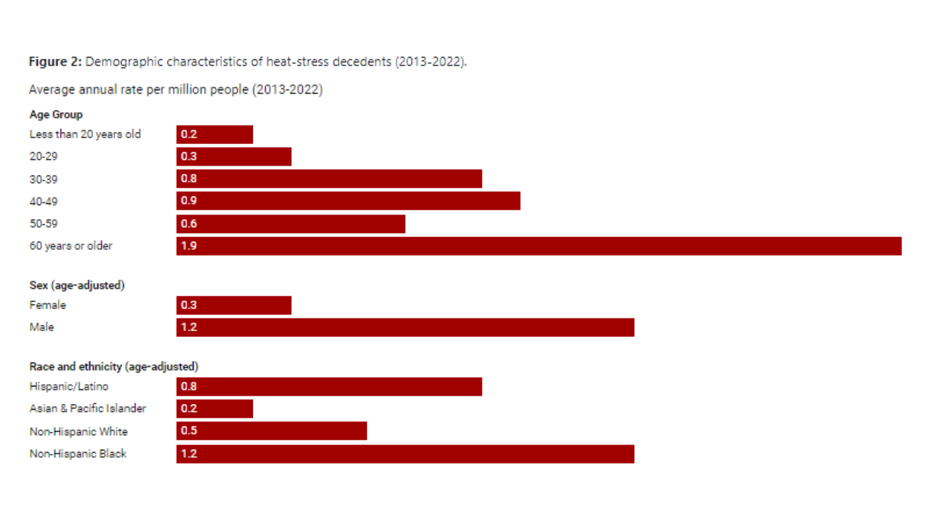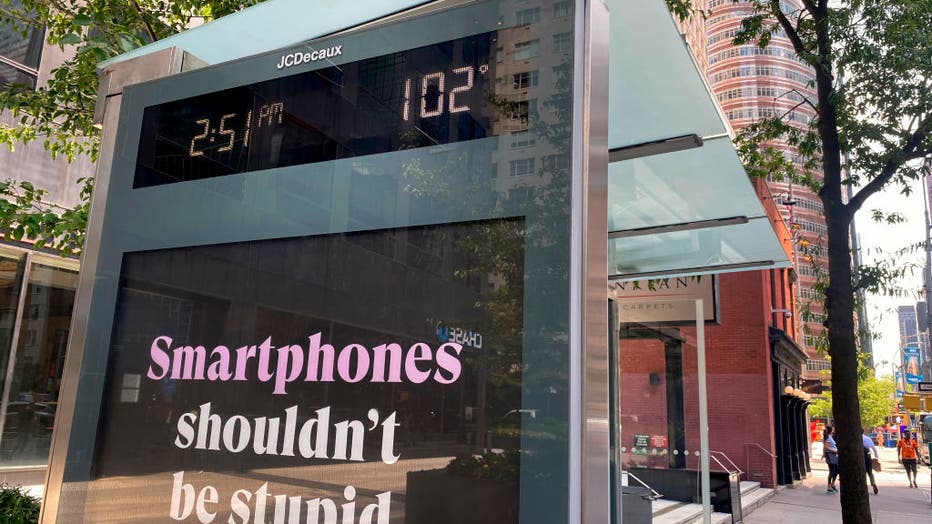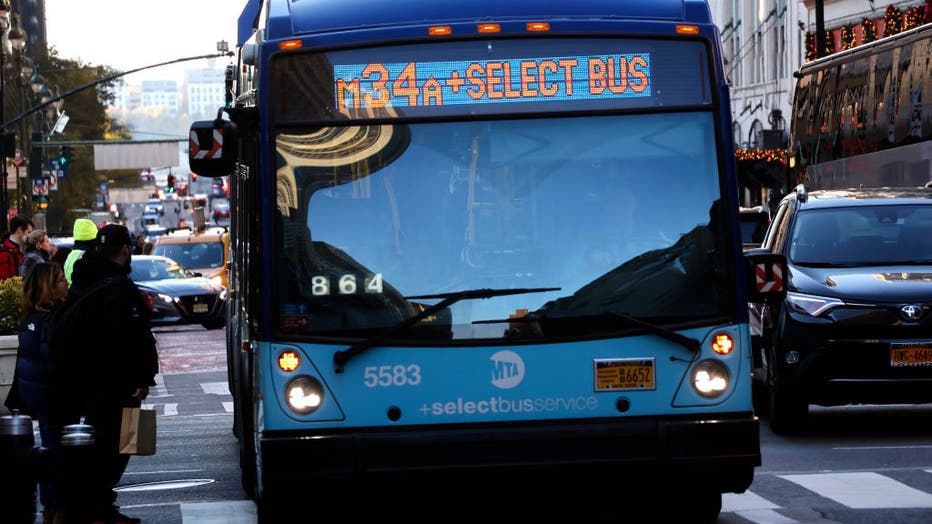Why are some NYC bus stops so hot? How hot is your stop? Report explains
NEW YORK - Some of the most scorching locations in New York City include subway stations below ground and bus stops directly above.
One report found that Harlem bus stops are the hottest in the city, some of them experiencing about 11 degrees of additional heat.
Many bus stops in the city get up to 10 degrees hotter than the outside temperatures, according to the report done by Transportation Alternatives.
Each summer, an estimated 350 New Yorkers die prematurely due to hot weather, according to the city's 2024 Heat-Related Mortality Report, highlighting the dire need for cooler spaces in the city.
Click here to jump to what the report found.

2024 NYC Heat-Related Mortality Report
- Black New Yorkers continue to have an age-adjusted heat-stress death rate that twice as high as that of White New Yorkers (nyc.gov).
- Death rates were higher in neighborhoods with more residents living below the federal poverty line compared with wealthier neighborhoods (nyc.gov).

Bus stop shelter with digital sign showing 102 degree temperature, Manhattan, New York. (Photo by: Lindsey Nicholson/UCG/Universal Images Group via Getty Images)
According to the city's heat-related mortality report, Black New Yorkers are more likely to die from heat stress, with death rates twice as high as those of White New Yorkers.
The Transportation Alternatives report found that most of the coolest bus stops in the city have bus shelters that provide shade and are mostly located near street trees, green space, or a body of water.
Where are the hottest stops in NYC?
The city has seen an increase in heat-exacerbated deaths over the last decade due to a continuous rise in temperatures.
The report found that the hottest stops are located in communities with the most riders, most of which are predominantly Black, Latino, Asian, and in high-poverty areas in Queens and the Bronx.
Stops along Frederick Douglass, Adam Clayton Powell, 116th Street, and Malcolm X were shown to be the most impacted by the heat.

NEW YORK, NY - NOVEMBER 12: An MTA bus stops to pick up passengers on 34th Street in Herald Square on November 12, 2023, in New York City. (Photo by Gary Hershorn/Getty Images)
According to the study, only 1 in 5 bus stops in the city have bus shelters, and only 1 in 3 stops are near trees.
These factors contribute to the higher temperatures at bus stops.
The hottest bus stops in the report were nearly 15 degrees hotter than the coolest stops.
Why are NYC bus stops so hot?
Based on the report, the hottest bus stops had the most commuters and the fewest amount of shelters or shade.
Bronx residents use the bus more than residents of any other borough in the report and 3 out of every 4 stops were hotter than the citywide average.
The report identified 100 bus stops and three bus routes that desperately need intervention.

Busy bus stop in front of Pawn Shop, Queens, New York. (Photo by: Lindsey Nicholson/UCG/Universal Images Group via Getty Images)
Here's what they all had in common:
- They all lack bus shelters.
- 64% have no street tree cover within 25 feet.
- On average, each had one-third fewer alternative transit options within a five-minute walk compared to the average New York City bus stop.
- There is an average bus speed of only 7.6 mph, below the MTA average of 8.3 mph.
- Nearly two-thirds are located in districts 8, 11, 17, 42, and 45.
These districts also have asthma rates 88% higher than the average district—a condition exacerbated by the heat, which the report highlights.
The report states that bus shelters, shade trees, and efficient service would help lower temperatures at stops, keeping riders safer and cooler.
They recommend that New York City’s hottest bus stops be prioritized for the installation of bus shelters and bus route improvements to minimize wait times.
To see how hot your stop is, click here.

